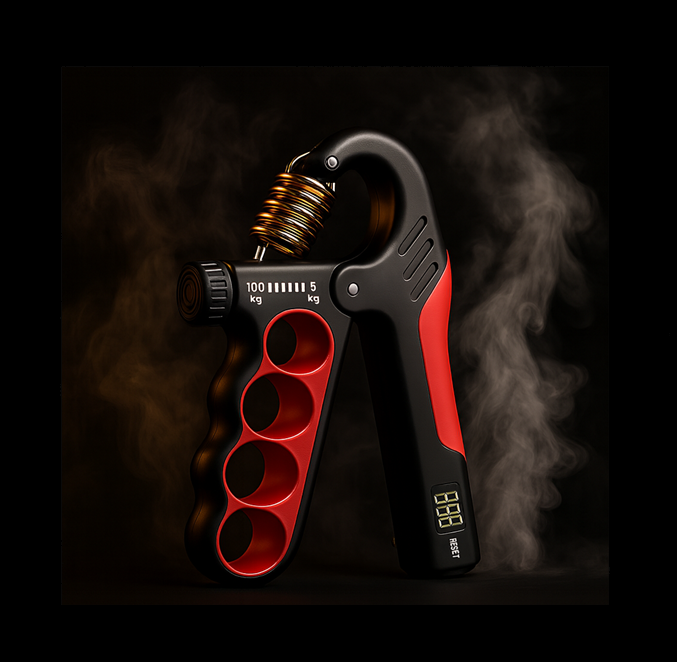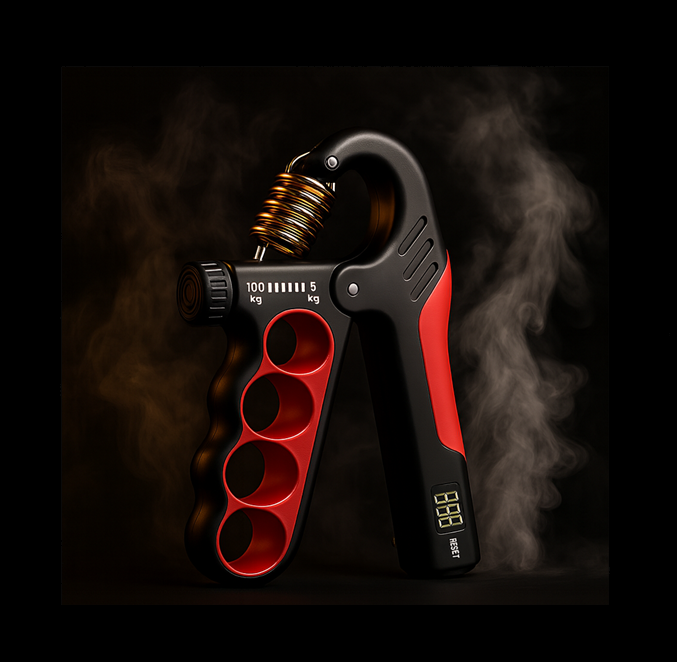Trigger finger exercises: Gentle movements for recovery and strength
Introduction
If you’ve ever felt one of your fingers catch or lock when you bend it, you’re likely dealing with trigger finger, a condition caused by irritation in the tendon sheath. It can make even simple movements — gripping a cup, typing, or opening a jar — uncomfortable or painful. The good news is that gentle, consistent trigger finger exercises can help restore flexibility, reduce stiffness, and improve mobility.
Whether you’re following a printable trigger finger exercises PDF or working with a therapist, the key is to move slowly and consistently. With time, you can regain normal function and reduce the risk of recurrence — especially when you combine stretching with gradual resistance training using tools like GripXtreme™.
***
Looking to improve grip, recovery, or performance? Check out the GripXtreme™ below — the tool changing how people train their hands. Buy it now for just $39!
 BUY NOW
BUY NOW
Understanding trigger finger
Trigger finger occurs when the tendon that controls finger movement becomes inflamed or swollen, making it harder for it to glide smoothly through its sheath. This causes the finger to “catch” or lock in place. The condition often develops from repetitive gripping motions, such as typing, using tools, or playing instruments.
Exercises that stretch and strengthen the affected tendon can ease pressure, restore mobility, and prevent stiffness.
The best trigger finger exercises
If you’re following a therapy guide or hand exercises for trigger finger PDF, you’ll likely see the following movements:
1. Finger Extensions: Place your affected hand flat on a table and lift each finger slowly one at a time. Hold for two seconds, then lower it gently. This helps restore motion and tendon glide.
2. Tendon Glides: Bend the top two joints of your fingers while keeping the base joints straight, then release. Repeat 10–15 times per hand to reduce stiffness and improve range of motion.
3. Finger Spreads: Wrap a rubber band around your fingers and open your hand slowly against the resistance. This strengthens the extensor muscles and improves balance between the front and back of the hand.
4. Soft Ball Squeeze: Use a soft hand therapy ball or stress ball to perform gentle squeezes, holding each for a few seconds. This activates the flexor muscles safely without overloading the tendon.
These exercises can be performed two to three times daily, taking care to avoid pain or overexertion.
Combining recovery exercises with grip strengthening
Once pain decreases and motion returns, adding light resistance can help strengthen the surrounding muscles and stabilize the joint. The GripXtreme™ 5–100KG Adjustable Hand Gripper is ideal for this next phase because it allows full control over tension levels.
Start with the lowest setting (5KG) and perform slow, deliberate squeezes — around 10–15 reps per session. Over time, as strength returns, increase resistance slightly. This encourages long-term tendon resilience without the risk of reinjury.
The electronic counter built into GripXtreme™ also helps you track progress, ensuring consistency as you rebuild strength and mobility.
The benefits of ongoing grip training
Trigger finger recovery doesn’t stop once symptoms fade. Maintaining hand strength and flexibility keeps your tendons healthy and prevents flare-ups. Regular grip training increases blood flow, promotes collagen repair, and strengthens the small stabilizing muscles that protect the tendons.
Even a few minutes a day with GripXtreme™ can help maintain balance between strength and flexibility — something many trigger finger sufferers overlook.
Why GripXtreme™ complements trigger finger therapy
GripXtreme™ is designed with rehabilitation in mind. The adjustable resistance allows you to start with gentle therapy and progress to full-strength training at your own pace. The ergonomic handle reduces strain, while the reinforced steel spring ensures smooth resistance across every level.
Its compact design makes it easy to use at home or in therapy settings — and unlike basic tools, it adapts as you recover, so you never outgrow it.
Final thoughts
Trigger finger recovery takes patience, consistency, and the right tools. Gentle stretching, mobility exercises, and progressive resistance work together to restore movement and prevent stiffness.
Start with light, printable therapy exercises to regain flexibility, then advance to strengthening with the GripXtreme™ 5–100KG Adjustable Hand Gripper for lasting results. With steady practice, you can regain full control, reduce discomfort, and keep your hands strong for years to come.
***
Want stronger hands and faster recovery? Meet the GripXtreme™ — the game-changer for grip training. Buy it now for just $39!